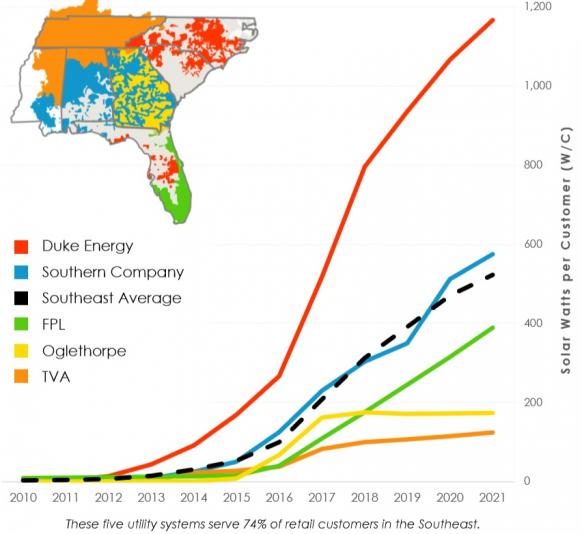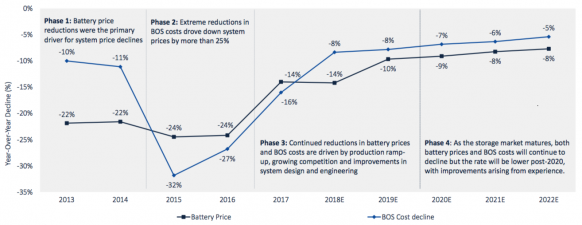North Carolina PV installs to hit 6 GW/year; Storage prices to drop 8% annually
Our pick of the latest solar news you need to know.

Related Articles
North Carolina to install 6 GW solar per year by 2021
North Carolina is forecast to spearhead solar installation growth in the U.S. Southeast, driven by favourable state legislation and supportive regulatory terms by the North Carolina Utilities Commission, the Southern Alliance for Clean Energy (SACE) group said in a report published February 27.
North Carolina installed 2.7 GW of solar power capacity in 2017 and annual installations are expected to rise to over 6 GW by 2021, according to the report.
Duke Energy, the state's dominant power supplier, supplied 83% of new installations in 2017. Monopoly utilities dominate the power supply markets in south-eastern states.
Forecast Southeast solar installations
(Click image to enlarge)
Source: Southern Alliance for Clean Energy (SACE).
North Carolina's 2007 Renewable Energy and Energy Efficiency Portfolio Standard (REPS) specifies that investor-owned utilities must source 12.5% of energy from renewable sources by 2021. This REPS, along with the implementation of the Public Utility Regulatory Policies Act (PURPA), created a vibrant market for solar development in North Carolina.
More recently, the 2017 Competitive Energy Solutions for North Carolina law will support solar growth through 2022. The law amends the state’s PURPA rules while directing utilities to estabslish a competitive bid process for solar.
As the below chart shows, solar installations in the Southeast will be dominated by a select group of utilities in the coming years.
Forecast Southeast installations by supplier
Source: SACE
Storage prices forecast to drop 8% per year through 2022
Energy storage system prices are forecast to fall by an average 8% per year through 2022, a slower rate than in recent years, GTM Research said in a report published February 26.
Steep falls in battery prices in 2013-2015 were then followed by extreme reductions in balance of system costs in 2015-2017. In the coming years, design learnings, growing competition and ramp up of production facilities will drive cost reductions, GTM Research said.
Improvements in hardware components, such as standardization of system design and engineering, will continue to reduce costs, the research group said. New system architectures and inverter selections will also drive down costs and further gains will be made from installation learnings and lower Engineering, Procurement and Construction (EPC) costs, it said.
Forecast battery price, balance of system costs
Source: GTM Research, February 2018.
GTM Research's price forecast is based on bottom-up assessment and tracking of energy storage system prices.
Global tracker shipments forecast to rise 30% in 2018
Global solar tracker shipments rose 32% in 2017 to 14.5 GW and are forecast to rise by a further 30% in 2018, GTM Research said a new report.
For the first time, Latin America overtook the U.S. as the largest tracker market.
“Mexico and Brazil are two of the fastest-growing solar markets in the world, each accounting for over 1.5 GW of tracker shipments in 2017," Scott Moskowitz, senior analyst at GTM Research and author of the study, said.
Nextracker and Array Technologies maintained first and second position in the global tracker market.
Global tracker shipments by supplier in 2017
While intense solar price competition and market consolidation continues to compress vendor margins, tracker sales volumes are expected to remain strong, GTM Research said.
“Fundamentals in the global utility-scale solar industry are excellent, and trackers are an obvious choice in most developing solar markets,” Moskowitz said.
“We expect 30% growth in 2018, with shipments approaching 20 GW," he said.
New Energy Update



